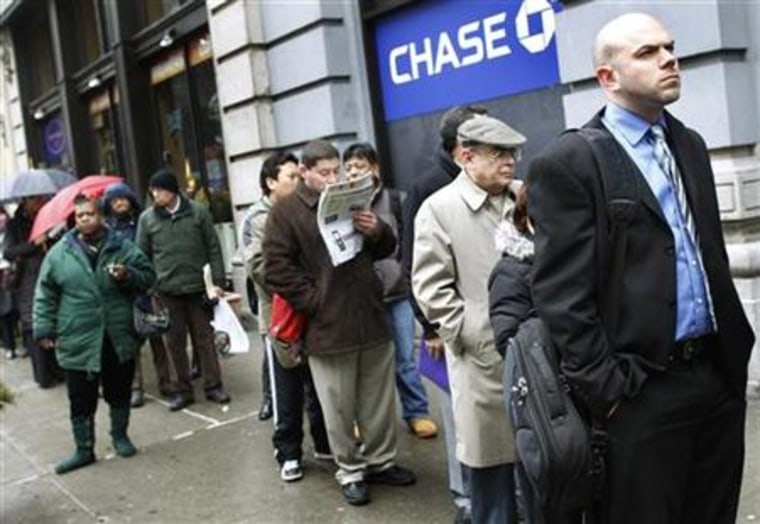Companies are spending again, and that could mean better economic times ahead.
Businesses have invested more money in machinery, computers, steel and other metals in three of the past four months. The uptick is fueling economic growth in the second quarter and may lead to more jobs later this year.
The rise in corporate spending comes at a critical time for the recovery. The unemployment rate has been stuck near double digits all year. And while the pace of layoffs slowed last week, the number of people seeking first-time jobless benefits remains about the same as in January.
Consumers are more cautious about spending, the housing market is slumping without home-buying tax credits and the European debt crisis has rattled investors.
But none of that seems to have dampened companies' outlook.
Corporate investment "is not only growing but accelerating, which is an encouraging sign that business remains in an expansive mindset," Michael Feroli, an economist at JPMorgan Chase, wrote in a note to clients.
Overall, orders for durable goods — those expected to last three or more years — fell 1.1 percent last month, the Commerce Department said Thursday. But that was largely the result of a drop in demand for commercial aircraft.
Excluding the volatile transportation sector, orders rose 0.9 percent after falling in April.
Contributing to the strength was a 2.1 percent increase in business spending. In the first five months of the year, business orders for equipment and other capital goods are up 15.5 percent.
Companies are parting with more cash to replace outdated equipment and software and to make their workers more productive, said Brian Bethune, chief U.S. financial economist at IHS Global Insight.
They are exporting heavily to developing economies in China, Brazil and India, Bethune said. In particular, they are shipping construction and mining machines and oil and gas equipment. Demand for those products benefits heavy equipment manufacturers like Caterpillar Inc., General Electric Co. and Cummins Inc.
Businesses are also buying more computers and networking equipment. New orders in that category rose 2.5 percent in May, the department said.
That's boosting Cisco Systems Inc., the leading manufacturer of computer networking equipment. The company said last month that its revenue jumped 27 percent in its most recent quarter. It expects the rapid sales growth to continue into the summer. To meet that demand, Cisco added 1,000 jobs in the spring after laying off 2,000 last year.
Some economists revised their forecasts for growth upward in second quarter Thursday after reading the Commerce Department's report on durable goods.
Ben Herzon, a senior economist at Macroeconomic Advisers, said the firm now expects the nation's gross domestic product to increase by 3.8 percent, up from a previous estimate of 3.4 percent.
Companies are likely to spend at a healthy clip for the rest of this year, Herzon said, which could contribute to more job growth in the second half of the year.
Employers have been reluctant to hire even as the economy has recovered. But "the longer the recovery goes, the more likely it is that they'll add jobs," he said.
Still, growth in the 3 percent to 4 percent range is relatively slow for a recovery, particularly after a steep recession. It isn't quickly reducing the unemployment rate, currently 9.7 percent. After the last severe downturn in the early 1980s, GDP grew at rates of 7 to 9 percent for five straight quarters. As a result, the unemployment rate dropped from 10.8 to 7.2 percent in 18 months.
Layoffs are slowing. The number of people filing first-time claims for jobless benefits fell by 19,000 last week, to a seasonally adjusted 457,000, the Labor Department said. It was the largest drop in two months.
That's about the same level as the beginning of the year and is a sign that hiring remains weak. Initial claims have dropped steadily after reaching a peak of 651,000 in March 2009. But claims need to fall closer to 425,000 to signal sustained job growth, many economists say.
The reports come amid mixed news on the health of the economic recovery. New home sales tumbled in May after government incentives for homebuyers expired in April, and the Federal Reserve issued a more cautious economic outlook Wednesday.
Employment is likely to remain sluggish. Economists at Deutsche Bank forecast that the June jobs report, due next week, will show employers cut 150,000 jobs after five months of gains. Those losses will reflect layoffs of temporary census workers. Private companies are expected to add 100,000 jobs, but gains at that pace aren't sufficient to reduce the unemployment rate.
The total number of people receiving benefits, meanwhile, dropped 45,000 to 4.5 million, the department said. But that doesn't include about 5.3 million people who received extended benefits paid for by the federal government in the week ended June 5, the latest data available.
During the recession, Congress added up to 73 weeks of extra benefits on top of the 26 weeks typically provided by states.
But those extensions expired earlier this month, leaving about 900,000 people without unemployment insurance, according to the Labor Department. That figure is expected to grow to 1.25 million by the end of this week.
The House approved legislation to restore the 73 extra weeks but the Senate is still debating the bill.
